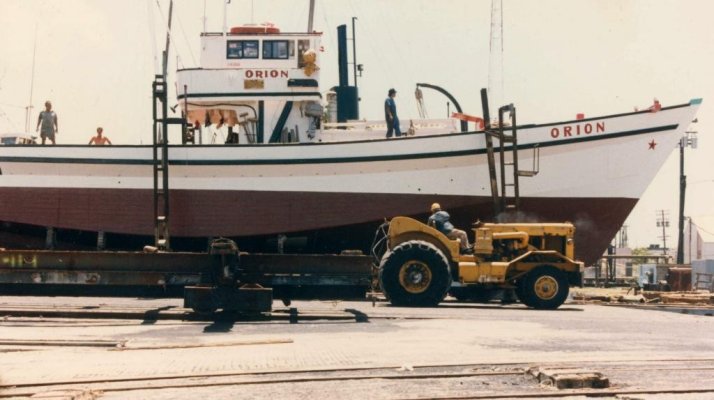PhatDad wrote:
This leads me to my next question. Are most trawlers just coastal cruisers our if weather comes up on you can you fell confident with most of these boats.
*All trawlers are fishing boats, and they pull a trawl net along the bottom, hence the name.* As such, they are excellent open ocean boats

The boats we have are not trawlers by any stretch of the imagination.* The name "trawler" is a marketing term dreamed up by boat manufacturers to try to give their recreational boats a more salty, rugged, seaworthy image among potential buyers.* As opposed to "cabin cruisers," which is what all these boats actually are.
American Marine, the company that originated the Grand Banks line of boats, never used the word trawler in any of their literature and advertisements.* They referred to their boats only as "Dependable Diesel Cruisers."
So much for the semantics lesson.* Speaking strictly for myself, I do not view our boat, a Grand Banks, as anything but a coastal cruiser.* And neither does our insurance company, who places restrictions on where we can take the boat.* Since the places they don't want us to go are all places we have no desire whatsoever
to go, there is no problem.
I don't believe you can say a particular type of class of boat is unsuited for open-ocean cruising.* Smarter, I think, to list the attributes that make some boats better suited to this than others.* On*a calm day, just about any cruiser will do okay on the ocean.* It's not until the winds kick up or storms move in that things start getting dicey.
What I would not want when things get nasty are big windows (which rules out just about every recreational "trawler"), a lot of topside weight (which rules out almost as many recreational "trawlers"), and a planing or semi-planing hull. These (in the sizes most of us*on*TF have)*give reasonably stable rides until a certain point is reached, at which point they are more than happy to capsize.* Or in going downsea, to yaw out of control and pitchpole.
There is a very good reason why just about all the smaller*(36'-60')*boats used for long-distance, open-ocean cruising are either sailboats or Nordhavns.* Well, there are probably*more makes of production power boats than Nordhavn that are well*suited for open ocean work, but you get my point.
If the distances aren't great and the weather forecasting is good, a boat like a Grand Banks can be used to run out to Catalina or the Channel Islands just fine on nice days.* But if the wind kicks up and the swells get big and the waves on top of the swells get steep, I cannot think of a worse boat to be out there in than a Grand Banks or anything similar.
If I lived where you do and the open Pacific was going to be my cruising area, I don't think I'd even consider a boat like*a GB.* I'd want something with much smaller windows, no flying bridge (we don't use ours at all even in calm water so*I wouldn't miss it), and--- if I wasn't in a hurry--- a displacement hull. Maybe with active or passive stabilizers.*
If I boated in the open ocean and*was in a hurry I'd want a big planing or semi-planing*boat (50' plus) with small windows, a fine entry into the waves, and a hell of a lot of power.
My idea of the perfect open ocean powerboat is pictured below.* Called "sampans" or "aku boats" (aku being the Hawaiian name for a species of tuna), the commercial*fleet numbered over a hundred back in the 40s, up through the 1970s.* Today there are three left (I just found out).*
Designed for the extremely rough conditions in places like the Molokai Channel, which even on a nice day can be a mass of big and confused swells and waves and 20 knots winds, these things were absolutely beautiful to watch doing through the water.* They cut through it like destroyers and had such a fantastic ride in the rough stuff around Hawaii that the tuna fishermen could fish standing barefoot*side by side*on a 2 x 12 with a piece of quarter round for a toe rail that was*fastened across the stern.* No railings, no safety harnesses, nothing.* And so far as I know, they never fell off.* To me and my limited boating experience and observation, these had the absolute best seakeeping abilites of any boat I've ever seen.* I've ridden on them and we saw them a lot when we were getting beat to death*out fishing in a 28' Uniflite.* I'd love to have one of these things*made of fiberglass.
So.... I would suggest that you do some serious hanging around at*the marinas in your area if you have not already done so and find out what kind of boat the people who are fairly serious blue water cruisers use.* The ones who go out to the*islands*when the weather's less than great or who are prepared to deal with the ocean if it turns sloppy.* Whatever they have, that's what you want.
*
-- Edited by Marin on Tuesday 1st of November 2011 06:03:05 PM






